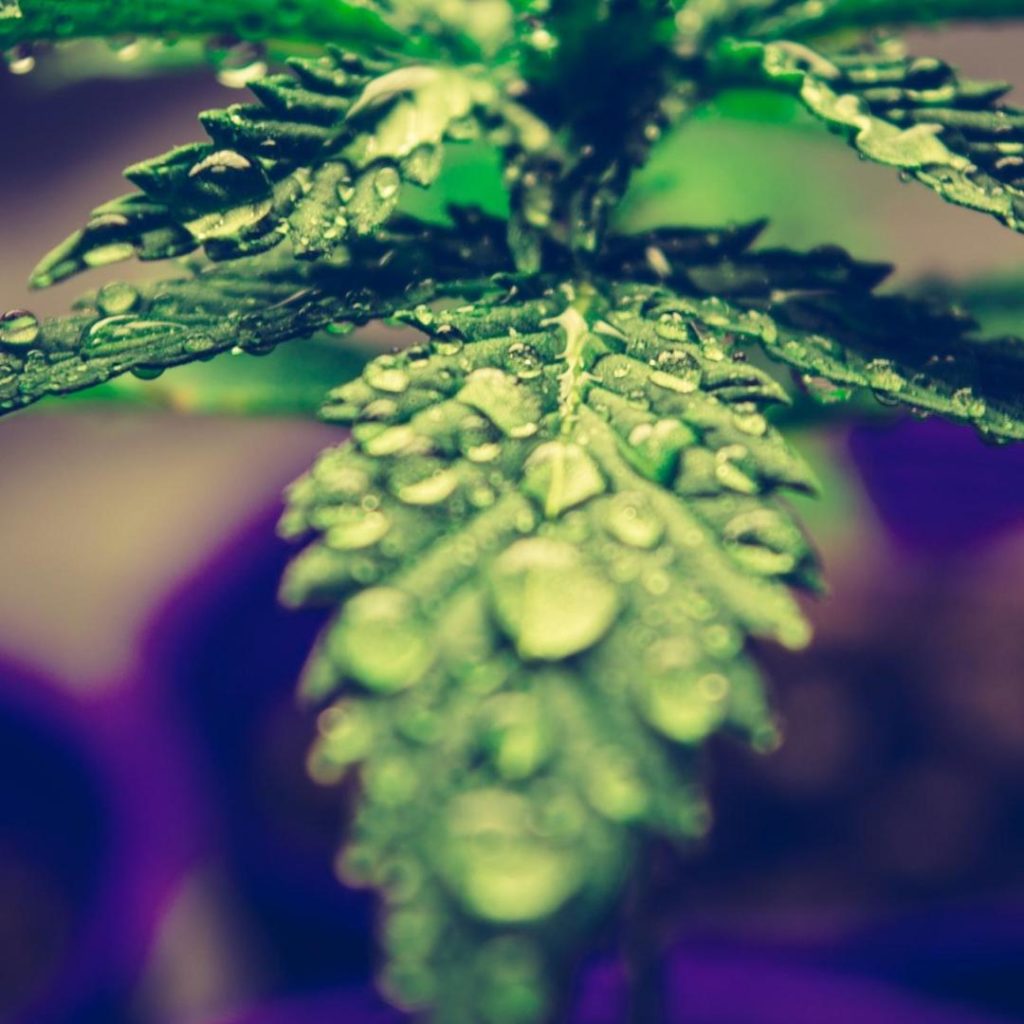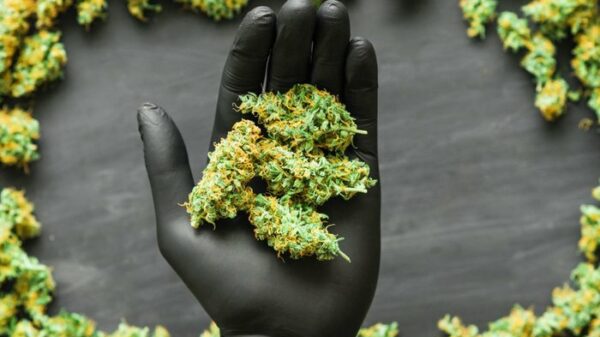The prospect of growing one’s own cannabis at home could motivate just about anybody to get the ball rolling! The first step would be doing research, becoming familiar with cannabis jargon, techniques and sustainable growing practices. Next, based on the specifications outlined in the grow plan; sourcing equipment, consumables and genetics. And finally, starting the actual process when life springs to action as your seeds germinate.

Perhaps you are a seasoned grower capable of maintaining a sizable ganja grow operation with relative ease? Or you recently enjoyed success and are currently noting adjustments to consider for the next grow project. Regardless of where you fit into the spectrum, you have a responsibility to responsibly cultivate cannabis by adopting sustainable growing practices and actively working to mitigate our carbon footprint.
WORLD OZONE DAY
September 16 is International Day for the Preservation of the Ozone Layer, as designated by the United Nations General Assembly. The observation is in commemoration of the date in the year 1987 when the Montreal Protocol on Substances that Deplete the Ozone Layer was signed by member nations. World Ozone Day serves as a reminder of the devastating environmental impact humans have had on the planet and the duty to ratify the damage fueled by past ignorance. We have to be better!

Here is our list of sustainable growing practices that are easily adopted by home growers of any scale, regardless of experience. The mission is simple; significantly reduce the environmental impact, mitigate residual carbon emissions and get high doing it!
ENERGY
LIGHTING
Cultivating cannabis requires a lot of light; pot plants that are grown outdoors rely on the natural energy from the sun. On the other hand, indoor plants require powerful artificial lighting that can easily be controlled to manipulate the growth cycle and guarantee the plants grow to their full potential. A small entry-level 300W grow light can consume up to 350kWh of energy during the life cycle of a plant. In South Africa, considering the latest price hikes by Eskom, it amounts to around R700 in electricity expenses alone.
Standard grow light solutions have come a long way in recent years, companies are constantly developing new technologies to deliver the best quality light with much lower energy input. Switching to an LED lighting solution will reduce energy consumption and minimize the amount of energy that is converted to heat. These specialized lights are fully adjustable, requires little to no maintenance and has an extended lifespan. A grow room with large windows offers the opportunity to substitute artificial lighting with natural sunlight whenever possible.
CLIMATE CONTROL
Cannabis plants love warm temperatures and moderate humidity, home growers may choose to rely on other energy-consuming devices to help control the climate in the grow room. These include dehumidifiers, air conditioning, exhaust systems to draw hot air out of the room, fans to keep air circulating and automation applications. A 70 W floor fan will consume 140kWh of electricity running 24 hours a day during the life cycle of your pot plant. A single floor fan can add up to R280 to the cost of your home grow, most growers rely on multiple devices for climate control.

The flow of air in a grow room is important to cultivate happy and healthy plants, CO2 depleted air can cause nutrient lockout and attract pests and pathogens. Home growers can regulate temperatures and humidity fluctuations by strategically positioning plants and relying on natural airflow. A passive intake system will inherently supply the grow room with fresh air while clearing out stagnant air.
CALCULATE KILOWATT-HOURS
Calculating the amount of energy a device will consume during a plant’s life cycle is fairly easy. Simply multiply the device wattage by the number of operational hours, then divide the amount by 1000; to calculate the kilowatt-hours.
kWh = Power [Watts] X Time [Hours] / 1000
Convert this to currency by multiplying the kWh by the cost per kWh, as per your local power utility.
NUTRIENTS
Cannabis requires a variety of micro and macro-nutrients in different ratios throughout its life cycle, essential to promote healthy development. Home growers are spoilt for choice when it comes to nutrient brands, each promising an even bigger and better harvest. The irresponsible use of these chemical products leads to nutrient pollution, which poses major environmental and human health issues. Rivers, lakes and oceans are flooded with nitrogen and phosphorus from runoff; causing accelerated algae growth that is severely detrimental to the delicate ecosystems.
Growers have a responsibility to adopt sustainable practices that compensate for the use of synthesized nutrients. Incorporating perlite and vermiculite into healthy soil increases water retention and ultimately reduces harmful runoff. Reverse osmosis is a purification process that removes environmentally damaging chemicals from harvested runoff water.

Natural fertilisers like guano and organic compost have all the nutrients pot plants require, and are far more environmentally friendly than the artificial equivalent. Homemade compost tea is the most sustainable fertiliser that supports the growth of microorganisms, promotes plant growth and offers protection against pests.
Eliminate pests like spider mites and leaf miners with an environmentally friendly DIY insecticide. Simply mix together equal parts vegetable oil and diluted organic soap water, shake vigorously and spray away! Apply the magical mixture directly onto unwanted insects and infested leaves, avoiding any forming buds.
WATER
Not all cannabis strains are the same, smaller plants may consume less water than their sizable cousins. An archetypal outdoor plant will guzzle up on average 3.5 litres of water a day to produce 450g of smokable flower, amounting to ~400 litres during its life cycle! Stressed plants are thirsty! Maintaining a favourable climate in the grow room will ensure the plants do not consume more water than they need to sustain normal growth.

Environmentally conscious home growers should implement sustainable growing practices like irrigating with condensation or rainwater. Hydroponics and aquaponics could be considered as alternative methods for cannabis cultivation, these contemporary systems use less water than soil systems.
WASTE MANAGEMENT
Sustainably growing ganja includes an obligation to adapt responsible waste management practices. Inorganic waste like plastic, glass and metal must always be recycled or creatively UPcycled for reuse. All biodegradable waste should be periodically incorporated into a compost project to revitalize tired soil and make nutrient and microorganism rich compost tea. Alternatively, there is an eco-warrior out there who would be grateful to take any organic trimmings off your hands.

Give preference to brands that use eco-friendly alternatives, are actively involved with recycling initiatives and invests in community development. Demand products that are responsibly manufactured and ethically sourced.
Each and every person has a responsibility to contribute towards efforts aimed at preserving the environment, developing sustainable alternatives and adopting regenerative practices. These sustainable growing practices are simple to implement, easily maintained and contribute to reducing a home grower’s carbon footprint. Sustainably grown ganja simply tastes better, especially when you are committed to contributing to a cleaner future.
























